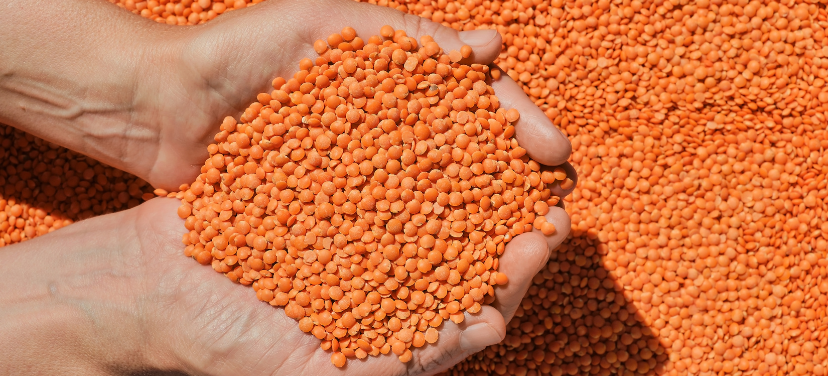
Lentil production. Trends and prospects.
Atameken-Agro JSC considers lentil production in Kazakhstan to be one of the most promising areas of agriculture.
Despite the fact that most of the acreage in the structure of the leading Kazakh agricultural holding is occupied by grain crops, the management of Atameken-Agro JSC is convinced that Kazakhstan needs and can move away from monoculture farming. The company actively monitors global trends and strives to diversify production by increasing the share of legumes. In particular, lentils. Compared to wheat, legumes have higher margins, they saturate the soil with valuable nitrogen and, in general, their cultivation reduces greenhouse gas emissions, which has a beneficial effect on the environment.
According to market experts, global consumption of legumes may increase to 116.8 million tons per year by 2031 (from 99.7 million tons in 2022). Despite the fact that today the consumption of legumes exceeds their production by 8.26 million tons per year.
Crop farms that are part of Atameken-Agro began growing lentils back in 2014, clearly understanding where the market situation was heading. Today, lentils and another crop, peas, dominate legume production in Kazakhstan. This was announced by the Chairman of the Board of Atameken-Agro JSC Kintal Islamov at the international conference “Asia Grain Conference”, which was held in Almaty in the spring.
Moreover, in recent years, the trend has led to a reduction in pea production in Kazakhstan in favor of lentils. This happens because this crop is more resistant to dry conditions than peas. In addition, according to the head of Atameken-Agro, a more significant reason for the increase in lentil acreage is its good margins.
– В 2022 году мы произвели гороха 7,4% от всего валового сбора в Казахстане. При этом чечевицы – практически 19,9% от всего валового сбора, – отметил К. Исламов. – В 2021-2022 годах посевные показатели чечевицы росли.
According to the holding, today the main markets for peas are Afghanistan and Uzbekistan. Kazakh lentils go to Turkey.
Seeing the prospects for growing lentils, Atameken-Agro JSC is currently considering the construction of a plant for processing this crop. This will not only help Kazakhstan improve its own food security, but will also make it one of the important players in the export market of pulses in Central Asia.
Что касается двух других бобовых культур, выращиваемых в Казахстане, – нута и фасоли – то их производство не так интересно компании, как чечевица. Причин тут несколько: основными производителями и экспортерами этих культур являются соседние страны (к примеру, Узбекистан); стоимость нута ниже более перспективной чечевицы, а опыт производства фасоли в Казахстане еще сравнительно мал. К тому же, климатические условия не всегда позволяют ее выращивать: она влаго- и теплолюбивая. В связи с этим, площади нута были компанией сокращены.
По словам К. Исламова, производство чечевицы в Казахстане имеет все перспективы для того, чтобы стать важной культурой для экономики страны. Главные задачи – расширение подходящих рынков сбыта и удобных логистических цепочек.